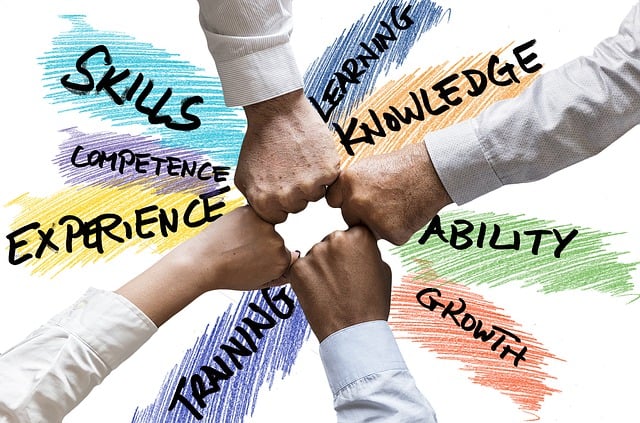
In today's educational landscape, fostering a cooperative learning environment is essential for promoting student engagement and collaboration.
This article highlights the top 10 best practices that educators can employ to create a successful cooperative learning environment.
From setting clear expectations to celebrating success, these practices aim to foster open communication, active participation, and a sense of community among students.
By implementing these strategies, educators can create an environment that encourages self-assessment, peer assessment, and continuous improvement.
Set Clear Expectations
To foster a cooperative learning environment, it is essential to set clear expectations for all participants. Defining expectations provides a framework for collaboration and ensures that all individuals are on the same page. When expectations are clearly communicated, it helps to establish a sense of accountability and promotes responsible behavior among participants.
One effective communication technique is to use specific and measurable language when defining expectations. Instead of vague statements, such as 'be respectful,' provide concrete examples like 'listen actively and refrain from interrupting others.'
Additionally, it is important to encourage open and honest communication among participants to address any misunderstandings or conflicts that may arise.

Define Roles Within the Group
Defining roles within a cooperative learning group can provide numerous benefits.
Firstly, role assignment ensures that each member has a clear responsibility, which promotes accountability and active participation.
Secondly, identifying an effective group role, such as a facilitator or a recorder, can enhance the group's overall performance and productivity.
Lastly, implementing role rotation allows individuals to develop a variety of skills and prevents the burden of one person always taking on a specific role.
Role Assignment Benefits
By assigning specific roles within a group, a cooperative learning environment can reap numerous benefits. Here are some of the benefits of role assignment:
- Enhanced Collaboration: Assigning roles ensures that each member has a defined responsibility, promoting better coordination and collaboration within the group.
- Increased Engagement: When individuals have a designated role, they are more likely to be actively engaged and invested in the group's success.
- Improved Time Management: Role assignment helps distribute tasks and responsibilities evenly, ensuring efficient use of time and resources.
- Developed Leadership Skills: Assigning leadership roles allows individuals to develop and practice important leadership skills such as decision-making, communication, and problem-solving.
Role assignment effectiveness lies in its ability to create a structured and organized learning environment that encourages active participation, fosters responsibility, and enables individuals to develop valuable skills.
Effective Group Role
Assigning specific roles within a group fosters a cooperative learning environment. When individuals are assigned roles, it helps establish clear expectations and responsibilities, which leads to effective collaboration. Role dynamics play a crucial role in creating a balanced and productive group.

Each member can contribute their unique set of skills and expertise, ensuring that the group's objectives are met efficiently. By defining roles within the group, individuals can focus on their specific tasks, reducing the chances of overlapping efforts or confusion. It also promotes accountability as each member is responsible for their designated role and the overall success of the group.
Effective group role assignment encourages active participation, enhances communication, and fosters a sense of ownership in the group's outcomes.
Role Rotation Advantages?
One advantage of role rotation within a group is the opportunity for members to gain a broader understanding of different responsibilities and tasks. This practice fosters team collaboration and skill development by allowing individuals to step into different roles and contribute in various ways.
Here are four advantages of role rotation:
- Increased empathy: Rotating roles helps team members understand the challenges and strengths of their colleagues, fostering empathy and enhancing cooperation.
- Skill diversification: By rotating roles, team members get the chance to develop new skills and broaden their knowledge, making the group more versatile and resilient.
- Balanced workload: Role rotation ensures that no one person is burdened with the same tasks all the time, distributing the workload evenly and promoting fairness within the group.
- Enhanced problem-solving abilities: By experiencing different roles, team members gain a deeper understanding of the group's dynamics and can contribute to more effective problem-solving.
Encourage Open Communication
Encourage open communication among students by promoting an inclusive and supportive classroom atmosphere.
Creating an environment that fosters open communication is essential for students to develop effective collaboration skills and promote teamwork.
By encouraging students to express their thoughts, ideas, and opinions freely, you empower them to actively participate in discussions and engage with their peers.

This open exchange of ideas allows students to learn from each other's perspectives and experiences, leading to a deeper understanding of the subject matter.
Additionally, open communication helps build trust and respect among students, creating a safe space where diverse viewpoints are valued.
To promote open communication, teachers can establish clear guidelines for respectful dialogue, provide opportunities for active listening, and encourage students to ask questions and seek clarification.
To cultivate a strong sense of community, it is important to establish a shared sense of purpose and belonging among students in the classroom. This can be achieved through various strategies that promote team building and create an inclusive environment. Here are some effective practices to foster a sense of community:
- Icebreaker activities: Start the year with activities that encourage students to get to know each other and build connections.
- Collaborative projects: Assign group projects that require students to work together, fostering a sense of cooperation and shared responsibility.
- Class meetings: Set aside time for regular class meetings where students can discuss concerns, share ideas, and build a sense of community.
- Celebrate diversity: Embrace and celebrate the unique backgrounds, perspectives, and talents of each student, creating an inclusive and welcoming environment.
Encourage Active Participation
In order to cultivate an environment of active participation, it is essential to provide opportunities for students to engage actively in classroom discussions and activities. Active engagement is a crucial aspect of collaborative learning, as it allows students to actively contribute to the learning process and develop a deeper understanding of the subject matter.
To encourage active participation, teachers can incorporate various strategies such as asking open-ended questions, promoting group discussions and debates, and providing hands-on activities. These methods not only stimulate critical thinking and problem-solving skills but also foster a sense of ownership and responsibility among students.
Additionally, incorporating technology tools and interactive platforms can further enhance active engagement by allowing students to interact with digital content and collaborate with their peers. By creating an environment that promotes active participation, teachers can empower students to take ownership of their learning and develop lifelong skills.

Provide Timely Feedback
Providing timely feedback is crucial for creating a cooperative learning environment.
Constructive criticism helps students understand their strengths and areas for improvement, while encouraging open communication ensures that feedback is received and acted upon effectively.
Importance of Constructive Criticism
Timely feedback plays a crucial role in fostering a cooperative learning environment by providing students with valuable insights for growth and improvement. Constructive criticism benefits students in multiple ways, including:
- Enhancing self-awareness: Constructive criticism helps students understand their strengths and areas for improvement, promoting self-reflection and self-improvement.
- Promoting peer assessment: Encouraging students to provide feedback to their peers fosters a sense of accountability and responsibility for their own learning, while also promoting collaboration and teamwork.
- Facilitating growth mindset: Constructive criticism helps students develop a growth mindset by encouraging them to see mistakes as opportunities for learning and growth.
- Improving performance: Timely feedback allows students to make adjustments and improvements in their work, leading to better academic performance and achievement.
Encouraging Open Communication
To foster open communication and facilitate effective feedback in a cooperative learning environment, it is essential to prioritize the provision of timely and constructive input. Encouraging effective listening is crucial in this process, as it allows students to understand and respect diverse perspectives. By actively engaging in discussions and paying attention to their peers' viewpoints, students can develop empathy and enhance their communication skills.
Additionally, conflict resolution skills are vital in creating an environment where open communication thrives. Teaching students how to address conflicts respectfully and find common ground promotes a cooperative atmosphere.
Providing timely feedback is equally important, as it allows students to make adjustments and improvements based on their performance. Regular and constructive feedback helps students stay motivated and fosters their growth and development in a cooperative learning environment.
Use Technology Effectively
The use of technology plays a crucial role in fostering a cooperative learning environment. To effectively integrate technology and promote digital collaboration, consider the following best practices:

- Provide access to technology: Ensure that all students have equal access to devices and the internet, eliminating any barriers to participation.
- Utilize online collaboration tools: Encourage students to work together virtually through platforms like Google Docs, Padlet, or online discussion boards.
- Foster digital citizenship: Teach students about responsible and ethical technology use, including online safety, proper citation, and respectful communication.
- Facilitate online discussions: Use video conferencing tools or discussion forums to engage students in meaningful conversations and encourage active participation.
Encourage Self and Peer Assessment
Encouraging self and peer assessment in a cooperative learning environment has numerous benefits.
Self-assessment allows students to reflect on their own learning and progress, promoting metacognitive skills and fostering a sense of responsibility for their own learning.
Peer assessment, on the other hand, provides students with valuable feedback from their peers, allowing for a diverse range of perspectives and promoting a deeper understanding of the subject matter.
Benefits of Self-Assessment
In order to promote a cooperative learning environment, it is important to acknowledge the significant benefits that arise from implementing self-assessment and peer assessment. Encouraging students to engage in self-reflection and adopt a growth mindset can lead to the following advantages:
- Enhanced self-awareness: Self-assessment allows students to identify their strengths and weaknesses, enabling them to set personal learning goals and take ownership of their progress.
- Improved critical thinking skills: Engaging in self-assessment and peer assessment requires students to evaluate their own work and provide constructive feedback to their peers, fostering higher-order thinking skills.
- Increased motivation and engagement: When students are actively involved in assessing their own work and that of their peers, they develop a sense of responsibility and pride in their achievements, leading to greater motivation and engagement.
- Development of collaboration skills: Peer assessment promotes collaboration and communication among students, as they work together to provide feedback and support each other's learning.
Peer Feedback Effectiveness
One effective way to foster a cooperative learning environment is by consistently promoting the effectiveness of peer feedback through self and peer assessment.
Peer feedback benefits both the giver and the receiver. For the giver, it enhances their critical thinking and analytical skills, as well as their ability to provide constructive criticism. For the receiver, it provides an opportunity for self-reflection and improvement, as well as a different perspective on their work.
To ensure the effectiveness of peer feedback, several strategies can be implemented. These include establishing clear guidelines and criteria for assessment, encouraging specific and actionable feedback, and providing opportunities for practice and reflection.

Celebrate Success
How can we appropriately recognize and reward the achievements of students in a cooperative learning environment? Celebrating achievements and recognizing accomplishments are crucial for creating a positive and motivating atmosphere in a cooperative learning environment. Here are four effective ways to celebrate success:
- Public Recognition: Highlighting student achievements in front of the class or school community can boost confidence and inspire others.
- Certificates and Awards: Providing certificates or awards for outstanding performance can serve as a tangible reminder of students' accomplishments.
- Personalized Feedback: Offering specific and constructive feedback to students helps them understand their strengths and areas for improvement.
- Classroom Celebrations: Organizing celebrations, such as class parties or special activities, can create a sense of unity and enjoyment for students.
Continuously Evaluate and Improve
To foster a cooperative learning environment, educators must consistently assess and enhance instructional methods. This involves evaluating the effectiveness of their teaching strategies and making necessary adjustments to improve student engagement and learning outcomes.
One effective approach is to implement role rotation strategies, where students take turns assuming different roles within their cooperative groups, such as leader, recorder, or facilitator. This not only promotes active participation and shared responsibility but also enhances critical thinking and communication skills.
Additionally, technology integration plays a crucial role in evaluating and improving cooperative learning. Educators can use various digital tools, such as online collaboration platforms or assessment software, to gather feedback, monitor student progress, and identify areas for improvement.
Frequently Asked Questions
How Can Technology Be Effectively Used in a Cooperative Learning Environment?
Technology integration plays a crucial role in fostering a cooperative learning environment. By utilizing collaborative tools, students can engage in interactive discussions, share resources, and collaborate on projects, enhancing their learning experience and promoting teamwork skills.
What Are Some Strategies for Encouraging Open Communication Among Students?
Promoting active participation and building trust are key strategies for encouraging open communication among students. By creating a supportive and inclusive environment, students feel empowered to share their thoughts and ideas, fostering a cooperative learning environment.
Teachers can foster a sense of community within a cooperative learning environment through community building activities and group projects. These activities encourage collaboration, communication, and teamwork, creating a supportive and inclusive learning community.

What Are Some Effective Ways to Provide Timely Feedback to Students?
Providing timely feedback to students is crucial for their learning progress. Effective communication is key in delivering feedback that is constructive, specific, and actionable. This helps students understand areas for improvement and motivates them to make necessary changes.
How Can Self and Peer Assessment Be Encouraged in a Cooperative Learning Environment?
To encourage self and peer assessment in a cooperative learning environment, it is important to promote self-reflection and provide opportunities for group evaluation. These practices foster a sense of responsibility and accountability among students.
 Family Craft ProjectsHome ImprovementCooking and BakingReuse and RecycleDIY GiftsEco-Friendly ProjectsDIY Home SolutionsSeasonal ActivitiesFun and GamesLearn TogetherPrivacy PolicyTerms And Conditions
Family Craft ProjectsHome ImprovementCooking and BakingReuse and RecycleDIY GiftsEco-Friendly ProjectsDIY Home SolutionsSeasonal ActivitiesFun and GamesLearn TogetherPrivacy PolicyTerms And Conditions

 Family Craft ProjectsHome ImprovementCooking and BakingReuse and RecycleDIY GiftsEco-Friendly ProjectsDIY Home SolutionsSeasonal ActivitiesFun and GamesLearn TogetherPrivacy PolicyTerms And Conditions
Family Craft ProjectsHome ImprovementCooking and BakingReuse and RecycleDIY GiftsEco-Friendly ProjectsDIY Home SolutionsSeasonal ActivitiesFun and GamesLearn TogetherPrivacy PolicyTerms And Conditions
